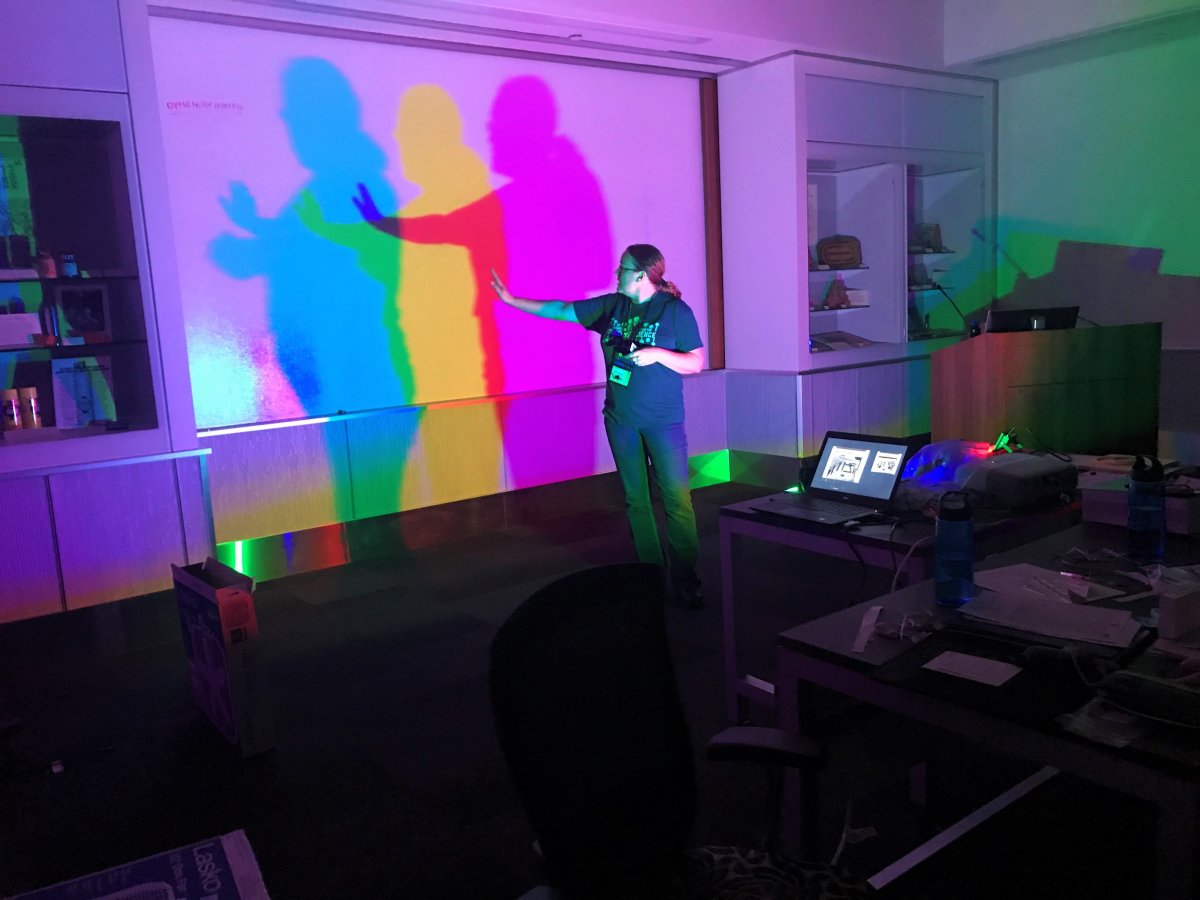Energy and Its Innovations and Implications
The Smithsonian Science Education Academy for Teachers (SSEAT) on Energy and Its Innovations and Implications is a week-long professional development opportunity for teachers to explore energy through a variety of hands-on workshops, discussions with experts, and behind the scenes exploration. This Academy focuses on the history of energy development and use in the United States, current energy needs, and alternative energy sources for the future. Topics covered include fossil fuels, solar power, wind power, nuclear energy, and alternative energy sources.

Goals of the Smithsonian Science Education Academy for Teachers on Energy and Its Innovations and Implications
- Increase content knowledge around energy use in the United States, alternative energy resources, and the effect of energy production and consumption on the world.
- Form rich connections through dialogue and shared experiences with a cadre of scientists and educators.
- Experience and learn pedagogical techniques that facilitate a hands-on, inquiry-based, integrated approach to teaching.
What to Expect
Every year’s SSEAT is a unique experience. An agenda from 2019 can be found here. Past years have featured:
Field trips to unique learning sites
We have traveled to a variety of active STEM sites. One of the crowd favorites has been visiting a local powerplant. During the tour participants can see how the energy needs of the US are met on daily basis, the work being done to improve energy generation, and ask professionals their questions.
“That’s 5++. The [powerplant] info session really helped me understand how this [electrical grid] all fits together.” - 2019 Participant
Access to SI Staff, artifacts, and spaces
Possibly the best part of attending a SSEAT is getting to go behind the scenes with the fabulous curators, such as Dr. Hal Wallace, pictured. In the past years, Dr. Wallace has introduced groups to the beginning of the electrical revolution, the creation of the electric grid, and the broad use of renewable energy in the US.
“Great passion, knowledge, and engaging presentation.” - 2018 Participant
Hands-on opportunity to learn
The Smithsonian Science Education Center believes in hands-on education for all leaners during this SSEAT there will be many hands-on opportunities to explore and modify energy technology, such as wind turbines, photovoltaic cells, microbial fuel cells, or paper circuits.
“I work so often with circuits I had a good grasp of this portion. However, the new demonstrations have inspired me to focus more on magnets and creation of electricity” - 2017 Participant
“I finally understand the photovoltaic cell.” - 2019 Participant
Real life applications
Energy has real world meanings and implications. During this SSEAT, we explore those through meeting active researchers, electric car experts, or exploring buildings and their energy needs. We also focus on how real world intricacies affect the development and use of alternative fuels through simulations, researchers, and education experts.
“Hands (or eyes actually)-on was so helpful, actually ‘seeing’ how it [hydrogen fuel cell] works. The people from DOE [Department of Energy] were especially helpful” - 2017 Participant
“I was interesting to note that different countries [in the game] have different resources. I didn’t notice there were different sources of energy because we only had one and when we traded we only go the same kind.” - 2019 Participant

TESTIMONIALS
“Hands down the best professional development I have attended. The knowledge, experiences, and hospitality was top notch.”
-2019 Participant
“I truly felt that I was learning more and acquiring more applications of knowledge here than in most of my graduate education courses.”
-2018 Participant
“I like how it was a ton of information presented in an interesting way. I feel like this week was one of the few where I was treated as a professional.”
-2017 Participant
Register for Energy and Its Innovations and Implications
Tuition for each Academy is $2,500 and includes:
- Course materials and resources
- Accommodations for 5 nights (Sunday–Thursday)
- Daily continental breakfasts, breaks, and lunches (Monday–Friday)
- Welcome dinner on Sunday and celebratory dinner later in the week
- All local travel (excluding airport transit)
Participants may choose to forego the provided hotel room and breakfasts for a discount of $500.